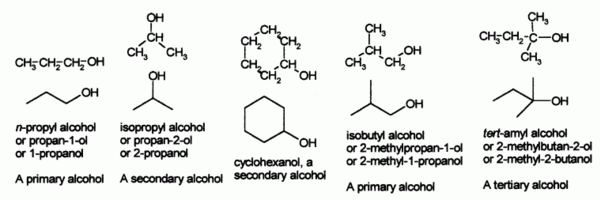The term alcohol originally referred to the primary alcohol ethanol (ethyl alcohol), the predominant alcohol in alcoholic beverages.
To measure how "strong" alcohols are we use alcohol by volume (abbreviated as ABV, abv, or alc/vol) which is a standard measure of how much alcohol (ethanol) is contained in a given volume of an alcoholic beverage (expressed as a volume percent). It is defined as the number of millilitres (mL) of pure ethanol present in 100 mL of solution at 20 °C.
The alcoholic beverages I am going to explain are Beer, Whisky and Vodka.
Blood alcohol test:
A blood alcohol test measures the amount of alcohol (ethanol) in your body. Alcohol is quickly absorbed into the blood and can be measured within minutes of having an alcoholic drink. The amount of alcohol in the blood reaches its highest level about an hour after drinking. But food in the stomach may increase the amount of time it takes for the blood alcohol to reach its highest level. About 90% of alcohol is broken down in the liver.
Beer:
The strength of modern beer is usually around 4% to 6% ABV, although it may vary between 0.5% and 20%, with some breweries creating examples of 40% ABV and above.
Beer is made from four basic ingredients: Barley, water, hops and yeast. The basic idea is to extract the sugars from grains (usually barley) so that the yeast can turn it into alcohol and CO2, creating beer.7
- Malting: The brewing process starts with grains. The grains are harvested and processed through a process of heating, drying out and cracking. The main goal of malting is to isolate the enzymes needed for brewing so that it’s ready for the next step.
- Mashing: The grains then go through a process known as mashing, in which they are steeped in hot, but not boiling, water for about an hour. This activates enzymes in the grains that cause it to break down and release its sugars. Once this is all done you drain the water from the mash which is now full of sugar from the grains. This sticky, sweet liquid is called wort, which is unmade beer.
- Boiling: The wort is boiled for about an hour while hops and other spices are added several times. Worts provide bitterness to balance out all the sugar in the wort and provide flavor. They also act as a natural preservative, which is what they were first used for.
- Fermentation: Once the hour long boil is over the wort is cooled, strained and filtered. It’s then put in a fermenting vessel and yeast is added to it. At this point the brewing is complete and the fermentation begins. The beer is stored for a couple of weeks at room temperature or many many weeks at cold temperatures while the yeast works its fermentation. The yeast eats up all that sugar in the wort and liberates CO2 and alcohol as waste products.
- Bottling and Aging: You’ve now got alcoholic beer, however it is still flat and non carbonated. The flat beer is bottled, at which time it is either artificially carbonated like a soda, or if it’s going to be ‘bottle conditioned’ it’s allowed to naturally carbonate via the CO2 the yeast produces.
Whisky:
Most whiskies are sold at or near an alcoholic strength of 40% ABV, which is the statutory minimum in some countries – although the strength can vary, and cask-strength whisky may have as much as twice that alcohol percentage.
A still for making whisky is usually made of copper, since it removes sulfur-based compounds from the alcohol that would make it unpleasant to drink. Modern stills are made of stainless steel with copper innards (piping, for example, will be lined with copper along with copper plate inlays along still walls). The simplest standard distillation apparatus is commonly known as a pot still, consisting of a single heated chamber and a vessel to collect purified alcohol.
Vodka:
Since the 1890s, the standard Polish, Russian, Belarusian, Ukrainian, Estonian, Latvian, Lithuanian and Czech vodkas are 40% ABV. The European Union has established a minimum of 37.5% ABV for any "European vodka". Products sold as "vodka" in the United States must have a minimum alcohol content of 40%. Even with these loose restrictions, most vodka sold contains 40% ABV.
Vodka may be distilled from any starch or sugar-rich plant matter; most vodka today is produced from grains such as sorghum, corn, or wheat. Some vodkas are made from potatoes, soybeans, grapes, rice, sugar beets.
The master distiller is in charge of distilling the vodka and directing its filtration, which includes the removal of the "foreshots", "heads" and "tails". These components of the distillate contain flavor compounds such as ethyl acetate and ethyl lactate (heads) as well as the fusel oils (tails) that impact the usually desired clean taste of vodka. Through numerous rounds of distillation, or the use of a fractionating still, the taste is modified and clarity is increased.
Depending on the distillation method and the technique of the stillmaster, the final filtered and distilled vodka may have as much as 95–96% ethanol. As such, most vodka is diluted with water prior to bottling.
Consequences:
Most alcoholic drinks have ethyl alcohol; this plus the quantity the user drinks can lead to cause a blood alcohol concentration (BAC) of:
- 0.03%-0.12%: typically causes an overall improvement in mood and possible euphoria, increased self-confidence and sociability, decreased anxiety, a flushed, red appearance in the face and impaired judgment and fine muscle coordination.
- 0.09% to 0.25%: causes lethargy, sedation, balance problems and blurred vision.
- 0.18% to 0.30% causes confusion, impaired speech, dizziness and vomiting.
- 0.25% to 0.40% causes stupor, unconsciousness, vomiting and respiratory depression (potentially life-threatening).
- 0.35% to 0.80% causes unconsciousness, life-threatening respiratory depression and possibly fatal alcohol poisoning.



